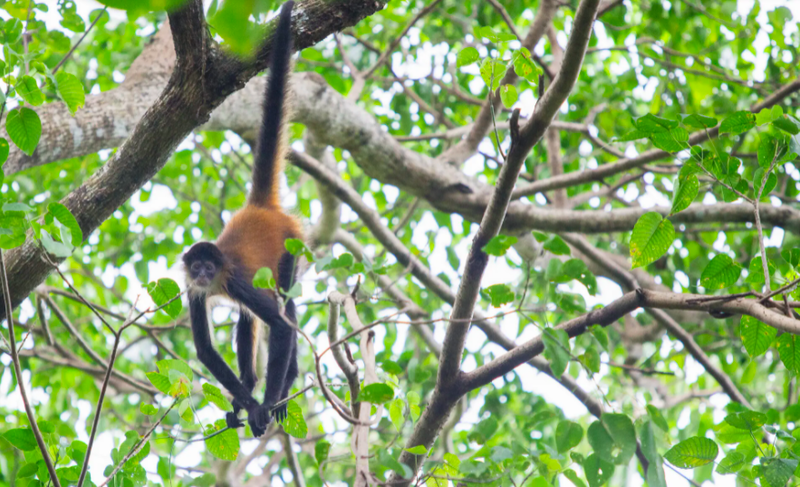Environmentalist fight to save the Azuero Spider Monkey

The Azuero spider monkey, a subspecies of the Central American spider monkey, is endemic to Panama’s Azuero Peninsula is subject to widespread deforestation and scarce food resources.
With a nearly wiped out population, this incredibly rare subspecies brought environmentalists to the Azuero Peninsula to study the habitat, one country’s only remaining tropical dry forests, which has been fragmented by deforestation.
The landscape split into "habitat-islands", essentially pockets of forested environments that can still sustain wildlife is still full of biodiversity.
Matt Stirn writes for the times in his article In Search of Panama’s Elusive Spider Monkeys that During a population survey in 2013, the primatologist Dr. Pedro Mendez-Carvajal of Oxford Brookes University estimated that only 145 Azuero spider monkeys remained in the wild. A number, so low it would make them one of the rarest subspecies of primates in Central and South America.
Stirn explains that when he traveled to the Azuero Peninsula to work with Pro Eco Azuero in 2017, he worked with the organization alongside local scientists and landowners on a community-oriented approach to conservation. The grassroots approach includes working alongside farmers to replant trees, working with local teachers to create lesson plans around conservation and sustainability, and partnering with local supporters to foster a culture of conservation and land stewardship.
The creation of a wildlife corridor — spanning 75 miles and 62,000 acres — across the Azuero Peninsula was one of the first projects initiated by P.E.A. By planting trees across clear-cut landscapes, the corridor aims to increase the size of available habitat by reconnecting several islands of forest which were isolated from one another.
Stirn also spoke to the importance of engaging teachers in an effort to gain the trust of the community. A decade of working with a generation has fostered a new generation of young environmental activists. And now, parents are starting to hear about the importance of conversation from their children.
“It is more meaningful when it is our own children who say we must reforest and protect nature,” Ms. Vasquez de Zambrano of P.E.A explains. “I think working with kids has made a real difference.”
Today, over 400 farmers have pledged land for the wildlife corridor project. Five hundred acres of new trees will be planted on donated land in 2022 alone.
Through the collective help of local organizations, students, and community activists, the coastal Pablo Barrios Refuge gained national protection in 2019.
The article details new problems that the Azuero faces like large-scale mining and the introduction of new legislation that could allow development on protected lands however, it explains that despite this there is still a level of optimism in the community.
“Our greatest impact is the way we have changed people’s minds, creating a culture of conservation — and getting people to become advocates for their own community.”
- Ms. Vasquez de Zambrano of P.E.A
Source: New York Times - In Search of Panama’s Elusive Spider Monkeys
https://www.nytimes.com/2022/02/28/travel/panama-azuero-spider-monkeys.html
Photo Matt Stirn is an archaeologist and photojournalist
Trending Tags
